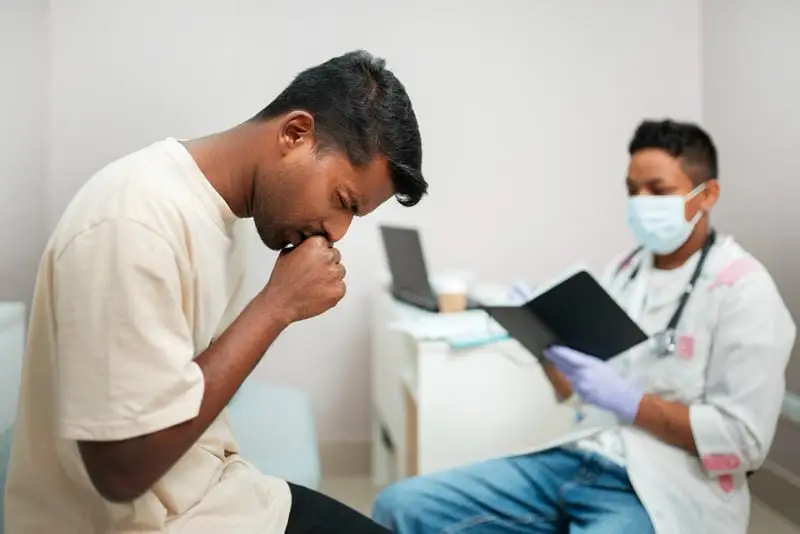Read Blog 
Tuberculosis Symptoms and Treatment: Early Signs, Diagnosis, and Recovery
Tuberculosis (TB) is one of the oldest known infectious diseases and continues to be a major public health concern, especially in developing countries. India accounts for a significant proportion of global TB cases, despite advances in diagnosis and treatment. The good news is that tuberculosis is preventable, treatable and curable when detected early and managed properly.
Understanding tuberculosis symptoms and treatment is critical for reducing disease spread, preventing complications and achieving complete recovery.
What Is Tuberculosis?
Tuberculosis is an infectious disease caused by Mycobacterium tuberculosis. It primarily affects the lungs (pulmonary TB) but can also involve other parts of the body such as:
-
lymph nodes
-
bones and joints
-
kidneys
-
brain
TB spreads through the air when an infected person coughs, sneezes or speaks.
Why Tuberculosis Remains a Major Health Issue
According to the World Health Organization and ICMR data:
-
millions of new TB cases are reported annually
-
delayed diagnosis increases transmission
-
incomplete treatment leads to drug resistance
Early detection and treatment are key to TB control.
Common Tuberculosis Symptoms
TB symptoms often develop gradually and may be mild in the early stages, leading to delayed diagnosis.
Persistent Cough
A cough lasting more than two to three weeks is a hallmark symptom of pulmonary TB.
The cough may:
-
be dry or productive
-
worsen over time
-
sometimes produce blood
Fever and Night Sweats
Low-grade fever, especially in the evenings, is common.
Night sweats that soak clothing or bedding are a classic TB sign.
Unexplained Weight Loss
TB increases metabolic demand and reduces appetite, leading to significant weight loss.
Fatigue and Weakness
Persistent tiredness and reduced stamina occur due to chronic infection.
Chest Pain
Chest discomfort or pain may occur during coughing or breathing.
Symptoms of Extra-Pulmonary TB
When TB affects organs outside the lungs, symptoms depend on the site involved and may include:
Why TB Symptoms Are Often Ignored
Many TB symptoms resemble common infections or general weakness.
This leads to:
Awareness improves early detection.
How Tuberculosis Is Diagnosed
Diagnosis involves a combination of:
Early and accurate diagnosis is essential for effective treatment.
Tuberculosis Treatment Explained
TB treatment involves a combination of antibiotics taken over a fixed duration.
Standard TB Treatment
For drug-sensitive TB, treatment typically lasts:
The regimen includes multiple antibiotics taken in phases to ensure complete bacterial clearance.
Importance of Treatment Adherence
TB bacteria are slow-growing and resilient.
Stopping treatment early can result in:
-
incomplete cure
-
relapse
-
drug-resistant TB
Completing the full course is essential.
Drug-Resistant TB
If TB bacteria become resistant to standard drugs, treatment becomes longer and more complex.
Drug-resistant TB requires:
Prevention of resistance depends on correct treatment from the start.
Side Effects of TB Treatment
Some individuals may experience side effects such as:
Most side effects are manageable with medical guidance and do not require stopping treatment.
TB and Public Health
TB is not just an individual health issue but a community concern.
Effective TB control requires:
-
early diagnosis
-
treatment adherence
-
contact tracing
-
public awareness
India’s national TB elimination programmes focus on these strategies.
Preventing Tuberculosis
Preventive measures include:
-
early detection and treatment of active TB
-
improving nutrition and immunity
-
adequate ventilation in living spaces
-
screening close contacts
BCG vaccination offers partial protection, especially in children.
Living With and Recovering From TB
With proper treatment:
-
symptoms gradually improve
-
infection becomes non-contagious
-
normal life can be resumed
Regular follow-up ensures complete recovery.
When to Seek Medical Help
Consult a healthcare provider if experiencing:
Early action saves lives and prevents spread.
Long-Term Outlook After TB Treatment
Most individuals who complete treatment:
Long-term complications are rare with timely care.
Conclusion
Tuberculosis symptoms and treatment must be understood clearly to combat this preventable and curable disease. Persistent cough, fever, night sweats and weight loss should never be ignored. Early diagnosis, complete treatment adherence and regular follow-up are essential for curing TB and preventing transmission. With proper medical care and public awareness, tuberculosis can be effectively controlled and eliminated as a public health threat.
References
- Indian Council of Medical Research (ICMR) – Tuberculosis Epidemiology and Treatment Guidelines
- World Health Organization (WHO) – Global Tuberculosis Report
- National Tuberculosis Elimination Programme (NTEP) – Government of India
- Lancet Infectious Diseases – TB Diagnosis and Treatment Outcomes
- National Family Health Survey (NFHS-5) – Infectious Disease Indicators
- Statista – Global Tuberculosis Burden and Trends









